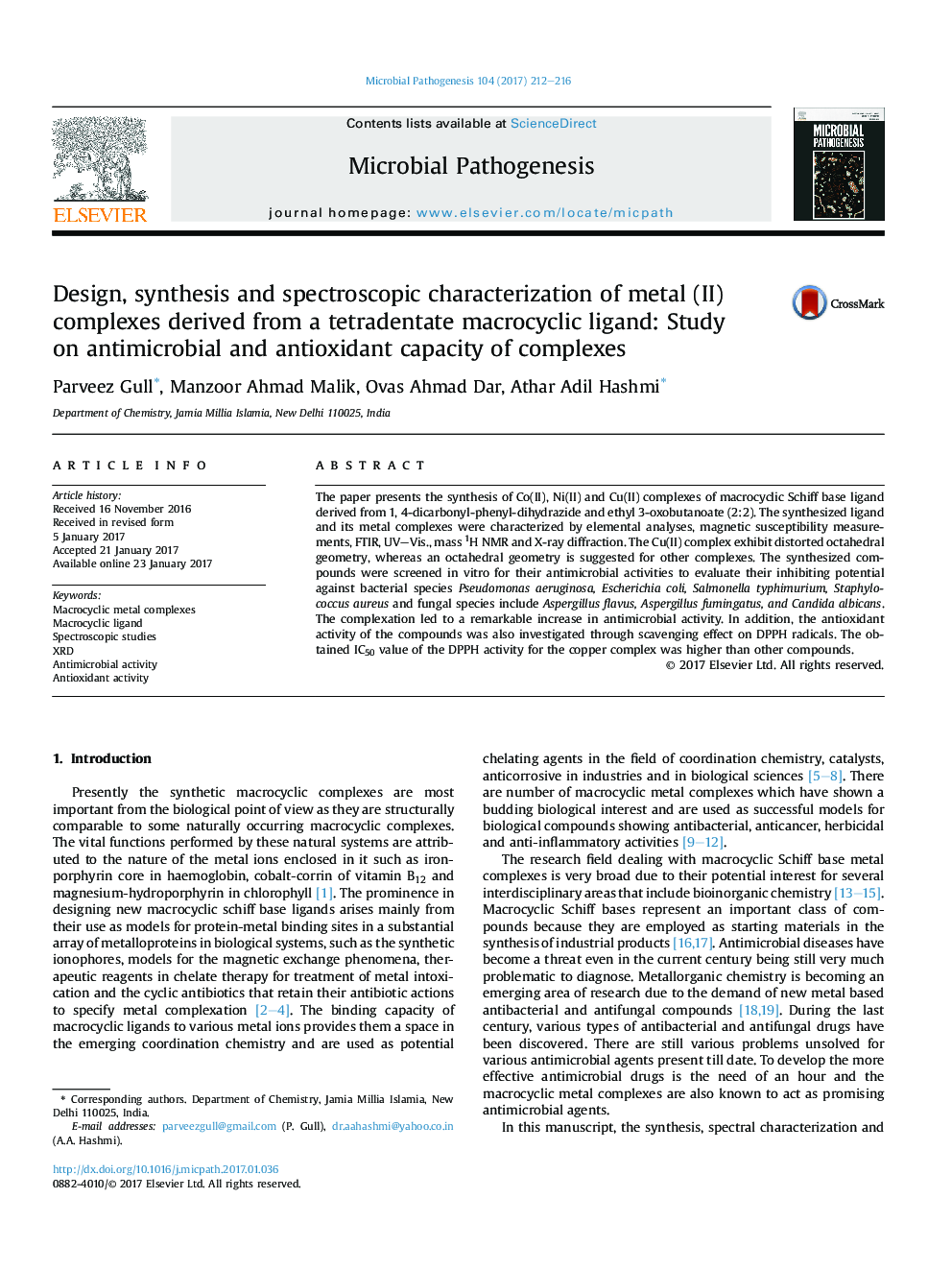| Article ID | Journal | Published Year | Pages | File Type |
|---|---|---|---|---|
| 5674009 | Microbial Pathogenesis | 2017 | 5 Pages |
â¢Co(II), Ni(II) and Cu(II) macrocyclic complexes were synthesised and characterized by various spectral characterizations.â¢Coordination of the metal and the azomethine nitrogen atoms were confirmed by IR spectra.â¢Synthesized compounds were screened in vitro for their antimicrobial activities.â¢The complexation led to a remarkable increase in antimicrobial activity.
The paper presents the synthesis of Co(II), Ni(II) and Cu(II) complexes of macrocyclic Schiff base ligand derived from 1, 4-dicarbonyl-phenyl-dihydrazide and ethyl 3-oxobutanoate (2:2). The synthesized ligand and its metal complexes were characterized by elemental analyses, magnetic susceptibility measurements, FTIR, UV-Vis., mass 1H NMR and X-ray diffraction. The Cu(II) complex exhibit distorted octahedral geometry, whereas an octahedral geometry is suggested for other complexes. The synthesized compounds were screened in vitro for their antimicrobial activities to evaluate their inhibiting potential against bacterial species Pseudomonas aeruginosa, Escherichia coli, Salmonella typhimurium, Staphylococcus aureus and fungal species include Aspergillus flavus, Aspergillus fumingatus, and Candida albicans. The complexation led to a remarkable increase in antimicrobial activity. In addition, the antioxidant activity of the compounds was also investigated through scavenging effect on DPPH radicals. The obtained IC50 value of the DPPH activity for the copper complex was higher than other compounds.
Graphical abstractDownload high-res image (138KB)Download full-size image
